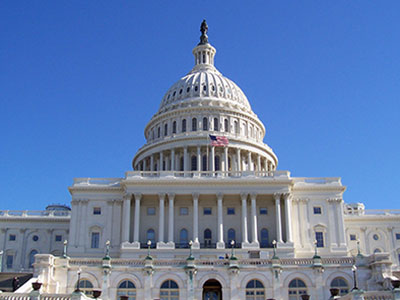Testimony
Development Finance in Asia
U.S. Economic Strategy Amid China's Belt and Road
On November 15, 2017, Roy D. Kamphausen testified before the U.S. Foreign Affairs Committee, Subcommittee on Asia and the Pacific at a hearing titled “Development Finance in Asia: U.S. Economic Strategy Amid China’s Belt and Road.” Mr. Kamphausen is Senior Vice President for Research at NBR.
The hearing webcast is available on the Foreign Affairs Committee website. See the introduction to Mr. Kamphausen’s prepared remarks below.
Testimony before the
House Committee on Foreign Affairs
Subcommittee on Asia and the Pacific
United States House of Representatives
Hearing: “Development Finance in Asia: U.S. Economic Strategy Amid China’s Belt and Road”
Testimony by:
Roy D. Kamphausen
Senior Vice President for Research
The National Bureau of Asian Research
November 15, 2017
2172 Rayburn House Office Building
Chairman Yoho, Ranking member Sherman, distinguished members of the Committee,
Thank you for the opportunity to appear before you today to share my views on China’s Belt and Road Initiative (BRI). I want to recognize the Committee’s vigilance for bringing to the public’s attention this important but underappreciated project, which is the subject of my testimony today. These views are my own and do not necessarily reflect those of The National Bureau of Asian Research (NBR). [1]
I. Path to the Belt and Road Initiative
Since the establishment of the People’s Republic of China (PRC) in 1949, the Chinese leadership has had two overarching foreign policy objectives: 1) the restoration of what it considers as its national domain and boundaries, and 2) the restoration of its historical position at the center of Asia, as the preponderant power in the region. These two “restorations” are basically encapsulated in what Xi Jinping has called the “China Dream of the great rejuvenation of the nation,” which he has promised to fulfill by the PRC’s 100-year anniversary in 2049.
China’s BRI is, I believe, the test case which offers us a first glimpse of the sort of integration that China would like to see emerge in Eurasia, and possibly across the globe. It gives us a window into how China intends to use its wealth and power, and for what ends.
The amount of intellectual energy that the Chinese elites—government, media, and academic alike—have put into discussing BRI is truly staggering. There are extensive materials available in the Chinese-language sources, not all of which are of equal quality. Some are nothing else than elaborate parroting of the official line, but many of these materials are very pertinent and reveal the internal discussion revolving around BRI. Moreover, the sheer volume of articles in a top-down system such as China’s suggests the importance of the topic to Chinese Communist Party (CCP) leaders.
Add to this the amount of BRI events sponsored around the world by Chinese entities, plus the $1 trillion that Beijing has promised to invest in related projects and the political capital personally invested by Xi into the initiative, and you will rapidly come to the conclusion that the mobilization of all these efforts and resources has to be done for a reason that the China authorities see as being tremendously important. This was confirmed by the Belt and Road Forum in Beijing in May 2017 and the inscription of BRI in the Chinese Communist Party Charter during the 19th Party Congress.
II. The Economic and Strategic Motivations behind BRI
BRI is officially framed as a product of China’s benevolence and a friendly offer to neighboring countries to jump “aboard the Chinese development train.” Language touting “win-win” outcomes and common goals language is readily apparent. But there are compelling reasons to believe that at its core BRI is in fact conceived in strategic terms as a means to secure China’s periphery, address internal security challenges with international linkages, and respond to challenges from the United States. The initiative sets the general long-term direction for China and seeks to mobilize and coordinate the use of all available national resources (political, economic, diplomatic, military, and ideological) to pursue internal (economic development) and external (diplomacy and national security) objectives in an integrated way.
For the purposes of this hearing, I will focus on the economic, military, and strategic nexus of BRI.
On the economic side, BRI looks like a new Chinese stimulus package, similar to the one that was introduced after the 2008 global financial crisis to sustain China’s economic growth. The crucial difference is that this time the activity will take place outside Chinese territory. BRI is also a way to export some of the overcapacity that was created precisely by the 2008 stimulus package—the surplus of Chinese cement and steel, for example.
The process will support the aim for China’s state-owned enterprises to “go global” and, with the help of state subsidies, will open new markets for the national champions that have, for this purpose, recently merged and consolidated into larger entities than they had been in the 1990s. Finally, in line with China’s ambition to make the renminbi fully convertible, the hope is that, as a result of BRI, the renminbi will be increasingly used across the region for cross-border transactions. Such a trend would weaken the effectiveness of U.S. sanctions.
From a security angle, in the near term BRI has significant potential to increase China’s military footprint in the region. BRI’s geographic scope extends over regions that together form an “arc of instability,” where the security situation can be volatile due to ethnic and religious violence, territorial disputes, and destabilizing spillovers. Over one million Chinese nationals and nearly 30,000 Chinese companies already operate abroad, and since 2010 they have been involved in 345 security incidents outside China, a trend that continues to rise. To secure themselves, Chinese firms operating in risky environments are increasingly hiring private Chinese security companies. As of 2013, 4,000 registered entities employed more than 4.3 million security personnel—most of them Chinese military veterans.
On the strategic side, Chinese authorities believe that providing economic development will help secure China’s most restive provinces. The western province of Xinjiang has presented some of the most challenging cases of terrorism and separatist activity. The CCP believes it can quell these forces by closing the prosperity gap between the country’s underdeveloped western regions and the prosperous east coast. In the same way, the authorities presume that through infrastructure investments linking China to its neighbors, BRI will raise the standard of living in the near abroad, promote mutual trust across the region, and discourage radicalization and terrorist recruitment. Chinese leaders are also hoping to secure energy resources and diversify supply through land routes that circumvent the Malacca Strait and the South China Sea. BRI is thus a major instrument that serves China’s neighborhood diplomacy: the hope is that the enormous amounts of money that will be invested in the region will help China gain some support for its foreign policy objectives and reduce potential resistance from neighboring countries against its regional and global interests. Economic power can be an instrument both of influence and of coercion against recalcitrant countries.
More broadly, BRI reflects Beijing’s regional and global ambitions: it is an instrument to consolidate China’s position at the heart of Eurasia, in a space where U.S. influence is rather limited. The initiative is intended to counter what Beijing perceives as the United States’ unacceptable “strangulation” of China’s strategic space in order to thwart China’s rise. This goal is not openly discussed, but in light of the concept associated with BRI, we can start to make out the contours of a new regional order that Beijing would like to see emerge as a result of the initiative.
China is still prudent and does not want to give the impression that it has devouring ambitions, for fear of resistance, opposition, and negative reactions along the lines of the “China threat theory.” In this sense, BRI is a continuation of a favorite Chinese strategic gambit that to win without war, one must weaken the adversary’s resistance by all means available. In the case of BRI, opposition is weakened through large-scale investment (often without contingencies) and extensive informational, even propaganda, campaigns.
III. Examples of How China Leverages BRI to Expand Its Influence
Consider the perspective offered by Li Xiangyang, the director of the National Institute of International Strategy at the Chinese Academy of Social Sciences (CASS. Li described BRI as providing a “complementary view (like when you have the choice between tea or coffee)” that is not directly competing with the mainstream model but is simply “development-oriented as opposed to rule-oriented.”
But BRI is much more than a development initiative. It is not merely a series of engineering projects but a strategic concept meant to break through U.S. attempts to limit China.
China, portraying itself as the magnanimous provider of public goods, proposes a list of possible areas for cooperation under the umbrella of BRI, and urges other countries to get “onboard China’s train of development.” Beijing also offers material incentives in the form of investments, infrastructure projects, and general economic and security benefits to the members of the community. In return, it expects that recipient countries tacitly agree not to challenge China’s core interests, criticize its posture, or seek to change its political system.
As a recent study of China’s high-speed railway diplomacy observes, “agreements for deepening cooperation in military affairs, culture, research and education, or other areas, are often negotiated simultaneously with—or in the aftermath of—the railway deals,” ultimately contributing greatly to China’s growing global presence and influence.
The following are examples of the more predatory aspects of BRI:
- Bidding process: To date there appears to be little evidence of a competitive bidding process for projects. Agreements are done on a government-to-government basis. This sidelines local companies who do not get access to the contracts.
- State subsidies: China’s loans are in reality state subsidies for Chinese companies. They are primarily used to pay Chinese companies to build the infrastructure with Chinese materials, using Chinese workers.
- Commercial interests: Only 23% of the Chinese aid funding falls under the OECD’s definition of aid. By contrast, 93% of U.S. spending falls into the category. Chinese loans are mostly given to projects without a development intent and that have a grant element of under 25%, which reflects China’s overall intention to promote its commercial interests overseas.
- Debt: Loans can be financially unsustainable for poorer countries (over 6% interest rate). Sri Lanka, for example, owes 10% of its debt to China (over $8 billion). The $24 billion China-Bangladesh agreement is equivalent to 20% of Bangladesh’s GDP. High-interest loans and unused infrastructure, added to underdeveloped financial markets, poor debt management, and weak trade balances, worsen the recipient countries’ capacity to pay China back. As a result, the debt will be passed to future generations or could be turned into equity that gives China control over national assets and critical infrastructure.
- Jobs: At the Belt and Road Forum in May, Xi Jinping claimed that since BRI was launched, 180,000 local jobs have been created. Yet, there are no transparent records on the ratio of Chinese to local workers, nor is it clear what kind of jobs local workers might get in BRI projects.
- Infrastructure projects: Revenue generation from infrastructure (port terminals, special economic zones, highway tolls) is unclear for local countries (e.g., Pakistan will reportedly receive only 9% of revenues from terminal and marine operations at Gwadar port). Where projects do not meet local needs and remain underutilized, local countries will be saddled with “white elephant” projects that not only do not produce revenue but cost an additional hundreds of millions of dollars in maintenance.
- Corruption: There is a high risk of Chinese bribery practices to worsen corruption in already governance-weak countries.
- Environmental impact: There appears to be little concern over damage to fresh water or arable land. Moreover, concerns remain that land will be expropriated for high-profile political projects.
- Control: The investment and assistance programs financed and controlled by China provide it with significant leverage over its neighbors, as Beijing can give and take back as it pleases. Enmeshed within a web of cooperation at all levels, and with no credible alternative sources of investment and aid in sight, regional countries are reluctant to oppose Beijing. Those that have tried to challenge China’s core interests, or refused to align their votes with it in the United Nations, have been subjected to severe economic and political pressure through threats to constrict trade and cooperation. Wary that they might be punished and isolated, most countries silently acquiesce to Beijing’s diplomatic priorities.
- Economic pressure: Beijing’s use of economic pressure against Mongolia, Norway, and South Korea provides only the most recent examples of a trend that has been evident for over a decade. As BRI countries are pulled ever more into China’s economic orbit, they will find it increasingly difficult to challenge Beijing on political issues. This has already begun to happen, and not only in the poorer countries along China’s borders.
The CCP has centered its narrative on the struggle against hostile foreign forces that try to encircle and force their will on China. By 2049, thanks to BRI, Beijing believes that these external forces will not be in a position to coerce China anymore because it will have gained considerable influence over its neighbors. Beijing will have shut down criticism and challenges to its interests, and most countries will in effect acquiesce to Beijing’s diplomatic priorities, for fear of economic reprisal.
IV. Policy Implications for the United States
According to China’s vision, the long-term effects on the region will be that the renminbi replaces the dollar; customers will use Alipay instead of VISA; authoritarian rule will be consolidated thanks to closer cooperation with Beijing, including in the security domain; families will watch Chinese TV programs and read the news provided by Xinhua; students, professionals, and political elites will be educated and trained in Chinese universities; internet censorship technology and applications from China’s “great firewall” will cover the region and filter public cyberspace; the spread of universal rights will yield to “development rights”; and finally, Western influence, especially that of the United States, will be relegated to the margins. China, in short, will be the preponderant regional power. That’s the vision that BRI is intended to enable and serve.
Just because we in the West may not have fully grasped what BRI is all about does not make the initiative foolish, unimportant, or doomed to fail. If we continue to be mesmerized by its supposed economic potential and pushed by some people’s willingness to engage with BRI for fear of being left behind or missing out on some ill-defined opportunities, then we are enabling Beijing to achieve its objectives and fulfil this broader vision. China will continue to make progress until, and unless, we acknowledge the risks posed by BRI both for U.S. interests, including the survival of the international legal order we have built, and for regional countries’ interests. The United States must come up with a comprehensive strategy to better defend this order against China’s attempts to undermine it.
For now, China has the initiative, and its projects under BRI have gained an undeniable momentum. But Beijing’s plan to reshape the economic and political map of Eurasia is still in its early stages, and there will be many obstacles on the road ahead. Rather than allowing BRI countries to be drawn more deeply into the Chinese-led system, and thus China’s sphere of influence, the United States and its friends and allies must be flexible in seeking to provide a counterweight, and when appropriate an alternative, to Chinese-led projects. This approach involves the following:
1. Continuing to provide developing countries with alternative options to support their infrastructure and development needs
2. Supporting the reform of multilateral development banks to enable sustainable infrastructure funding, in accordance with high transparency and good-governance standards
3. Engaging with BRI countries at the local level to inform them about potential debt burden, corruption, and environmental risks
Endnotes
[1] NBR recently published a monograph on China’s Belt and Road initiative entitled China’s Eurasian Century? Political and Strategic Implications of the Belt and Road Initiative by NBR Senior Fellow Nadège Rolland. Her research and findings are central to the arguments made in this testimony, which draws heavily from the monograph.




